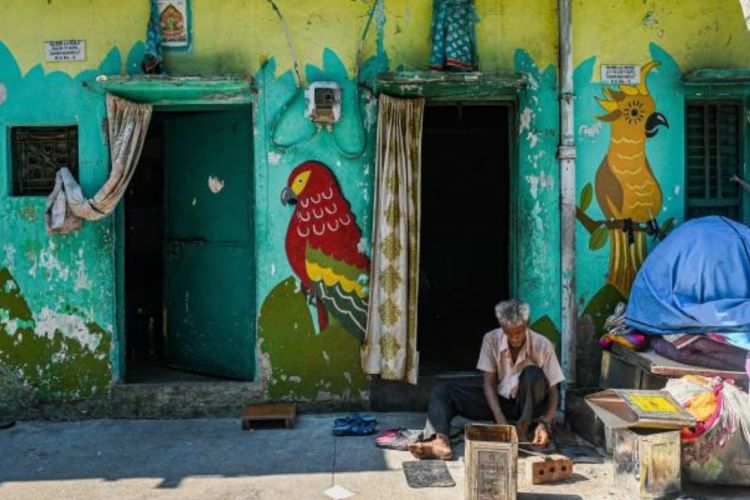
Touted as a blueprint for economic resilience, the Union Budget 2025-26 masks a stark reality—it largely ignores India’s most vulnerable. Despite rising inflation and joblessness, rural employment funding remains stagnant, agricultural support is lacking, and a regressive tax structure continues to burden the poor. While tax cuts favour the middle and upper classes, essential welfare schemes see no real expansion, deepening economic inequality.
One of the biggest disappointments of the budget is the lack of any increase in the allocation for the Mahatma Gandhi National Rural Employment Guarantee Act. The budget has retained the allocation for MGNREGA at Rs 86,000 crore, the same as the previous year, despite the rising demand for work under the scheme. The funding shortage this year will be severe as arrears amounting to Rs 11,000 crore will have to be paid from this year’s allocation.
READ | Budget 2025-26: A balancing act that lacked bold strokes
Furthermore, the average daily wage under the scheme remains at Rs 289, without any increase despite the high inflation rate. For millions of rural workers who depend on MGNREGA for survival, this is a severe blow.
No MSP increase or debt waiver
Agriculture employs nearly 45% of India’s workforce but contributes only 15% to GDP. Despite this, the budget provides no new initiatives to support farmers, and the long-standing demand for a legally guaranteed minimum support price (MSP) has been ignored. Additionally, there is no provision for a debt waiver, even though many farmer organisations have repeatedly emphasised the burden of mounting agricultural debts.
The government has also failed to address the shortcomings of the Pradhan Mantri Fasal Bima Yojana (PMFBY), which continues to leave many farmers without adequate compensation for crop losses. The omission of a comprehensive agricultural support strategy is a clear indication that the rural economy remains a low priority in the government’s fiscal planning.
No reform to address inequalities
One of the major highlights of the budget was the increase in the income tax exemption limit to Rs 12 lakh per annum. While this benefits salaried employees earning up to Rs 1 lakh per month, the benefits primarily accrue to the middle and upper-middle class. This move does little to address the core issue of economic inequality.
Meanwhile, the budget has not introduced any significant progressive taxation measures. There is no increase in tax rates for higher income slabs, and large corporate houses continue to benefit from a favourable tax regime. Instead of mobilising resources by taxing the wealthiest segments of society, the government has chosen to cut expenditures on crucial welfare programmes.
More bureaucracy for gig workers
Gig workers, who play a crucial role in the new economy, were mentioned in the budget speech, but the measures announced offer little real support. The government has proposed providing identity cards and registering gig workers on the E-Shram portal, but this does not translate into tangible benefits such as social security, accident insurance, or job security.
Even more worrying is the fact that with this new identity system in place, the government may claim gig workers as officially employed while offering no real safety net. Additionally, concerns have been raised that such registration could be a precursor to imposing GST on gig work, further burdening those already struggling to make ends meet.
Welfare programmes at risk
The revised estimates from the previous year show that the government actually spent Rs 1 lakh crore less than what was originally budgeted. This pattern of underspending has resulted in stagnation or cuts in key areas such as food subsidies, education, health, rural development, and social welfare. The allocations for 2025-26 remain largely unchanged from 2024-25, reflecting a reluctance to invest in the welfare of the poor.
For instance, despite the pressing need for better nutrition and education, allocations for these critical sectors have seen no significant increase. Similarly, pension and social security schemes remain underfunded, leaving millions of elderly and vulnerable citizens without adequate financial support.
A Budget not for the poor
The finance minister announced a rural prosperity and resilience programme aimed at improving employment and enterprise development in rural areas. However, this scheme lacks clarity on implementation and funding. Without a clear roadmap, this remains another promise that may fail to materialise into real benefits for the rural population.
The Budget 2025-26 has reinforced the perception that the government’s economic policies favour the affluent while leaving the poor to fend for themselves. By prioritising tax relief for the middle class and the wealthy while neglecting rural employment, social security, and agriculture, the budget fails to address India’s deepening economic inequalities.
If the government genuinely wants to create an inclusive economy, it must focus on structural reforms that increase the purchasing power of the masses, provide secure employment, and ensure a minimum standard of living for all citizens. Unfortunately, this budget falls far short of that goal, making it a lost opportunity for economic justice in India.
Solutions may lie outside the Budget
The biggest challenge for the government is that its ability to support the poor through the Budget is limited. Real relief can be offered by reforming the GST regime which disproportionately burdens the poor. Unlike the income tax which is based on income levels, GST is levied uniformly on all consumers, making it inherently regressive. Low-income households spend a higher percentage of their earnings on taxed goods compared with the wealthy, leading to economic strain.
The need of the hour is an equitable GST structure that contains broader exemptions for food, healthcare, and education, and lower tax rates on essential household items. It should also reduce compliance costs for small businesses and informal sector workers to enhance economic participation. India’s widening economic disparities make it imperative for policymakers to address these structural imbalances.
